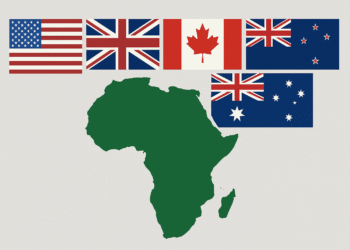Canada, often celebrated as a land of opportunities, has for years been a beacon for international students seeking a brighter future.
With its world-class education system and welcoming atmosphere, Canada has lured thousands of ambitious individuals from around the globe.
The promise of a Canadian education leading to permanent residency has been a compelling magnet for students worldwide.
However, beneath the surface, there’s a revelation that challenges the perception many hold: the path to permanent residency in Canada for international students is not as straightforward as it seems.
Recent statistics show that only about 30% of international students actually become permanent residents (PR) in Canada within a 15-year timeframe.
This eye-opening fact unveils a different reality from the widely-held belief that acquiring PR in Canada is easy. Let’s delve deeper into this issue and its implications.
Recent Developments
In recent years, Canada has witnessed an unprecedented influx of international students. These students not only enrich the cultural fabric of the country but also contribute significantly to the Canadian economy. However, the sheer volume of international students has prompted discussions within the Canadian government about imposing a cap on the number of students allowed into the country.
This development comes in the wake of growing concerns about housing shortages, job market saturation, and the strain on social services in certain regions, notably in Ontario. The Canadian government’s intention to cap the number of international students signals a potential shift in policy that could impact the dreams and aspirations of many prospective students.
Things You Should Know
The PR Process: Becoming a permanent resident in Canada is a multi-step process. While education in Canada is a valuable component, it doesn’t guarantee PR.
Students typically apply for PR through various immigration programs, including Express Entry and Provincial Nominee Programs (PNPs). Meeting eligibility criteria, such as work experience and language proficiency, plays a vital role.
Competition for PR: As the number of international students in Canada grows, so does the competition for limited PR spots.
This increased competition underscores the importance of being well-prepared for the application process.
It’s crucial for students to research and understand the specific requirements of the immigration programs they plan to apply to.
The Role of Provincial Nominee Programs (PNPs): PNPs have become an essential pathway for many international students to obtain PR.
These programs allow Canadian provinces to nominate individuals who meet their specific labour market needs.
Students who are open to living in provinces other than the more popular ones may find PNPs a more viable route.
Predictions on the Trend
Looking ahead, it’s likely that the Canadian government will implement stricter immigration policies and caps on international student admissions to address concerns related to housing, job markets, and social services. This may make the process of obtaining PR in Canada even more competitive.
Moreover, international students may need to explore alternative pathways to PR, such as PNPs or gaining work experience through post-graduation work permits.
Additionally, students should be diligent in researching immigration policies and ensuring they meet the evolving eligibility criteria.
In conclusion, while Canada remains an attractive destination for international students, the pathway to permanent residency is not as straightforward as it may appear.
The recent revelation that only about 30% of international students achieve PR within 15 years highlights the importance of informed decision-making and thorough planning for those pursuing their dreams in the Great White North.












